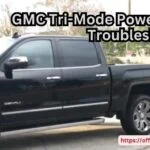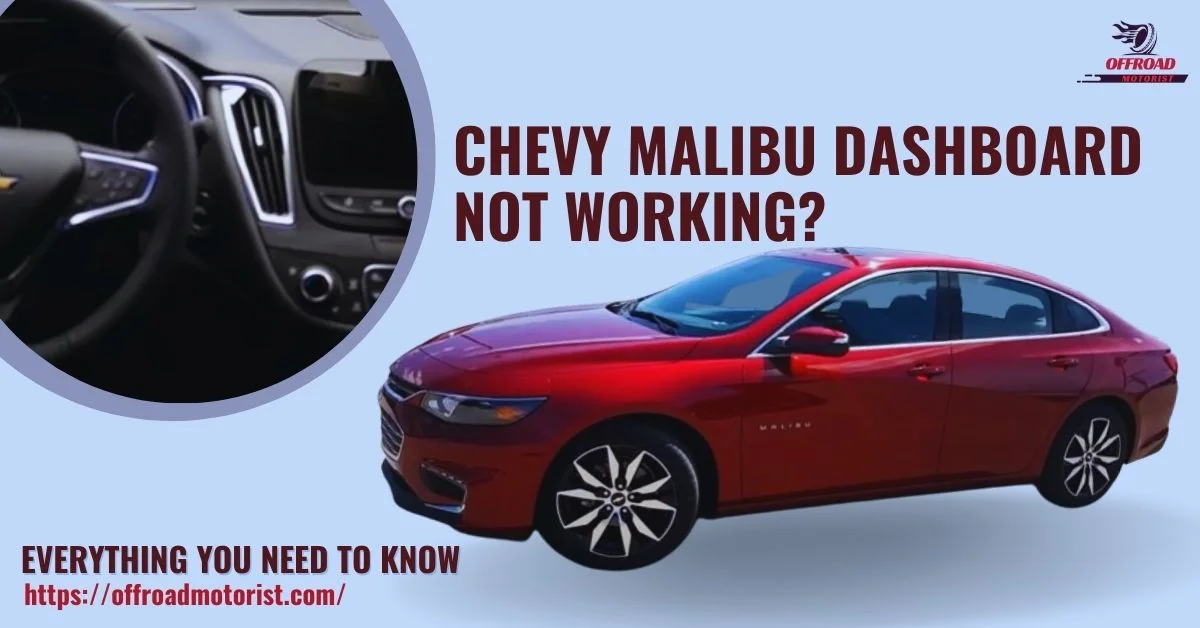Revolutionize Your Chevy Silverado Cruise Control Troubleshooting Skills
In today’s fast-paced world, cruise control has become indispensable for enhancing driving comfort, optimizing fuel efficiency, and reducing driver fatigue during long journeys.
With its intelligent design, cruise control maintains a consistent speed without requiring continuous input from the accelerator pedal. However, like any advanced technology, cruise control systems in Chevy Silverado and GMC vehicles can sometimes face troubleshooting issues.
This comprehensive guide aims to empower you with the knowledge and skills to effectively diagnose and resolve common cruise control problems.
We will help you transform your approach to Chevy Silverado cruise control troubleshooting and ensure a smooth, enjoyable driving experience by offering valuable insights and expert tips. So buckle up, and let’s dive into cruise control mastery.
Understanding Cruise Control
Cruise Control technology works through a combination of sensors, actuators, and controllers that communicate with the vehicle’s engine, transmission, and braking systems.
With the press of a button, drivers can set their desired cruising speed and allow the system to take over throttle control, freeing their foot from the accelerator pedal and ensuring a more relaxed and comfortable drive.
What is cruise control and its benefits?
Cruise control is an electronic system that enables a vehicle to maintain a constant speed set by the driver without the need for continuous acceleration.
Cruise control is an advanced electronic system that allows drivers to set and maintain a desired speed without constantly keeping their foot on the accelerator pedal.
This innovative technology offers numerous benefits, including:
- Enhanced driving comfort: By maintaining a consistent speed, cruise control reduces the need for continuous acceleration, making long drives more comfortable and relaxing.
- Improved fuel efficiency: With constant speed, the engine operates optimally, leading to better fuel economy and reduced emissions.
- Reduced driver fatigue: Cruise control helps minimize physical strain on the driver during extended trips, allowing for increased focus and attentiveness on the road.
- Increased safety: Cruise control can help prevent accidental speeding and promote safer driving habits by enabling drivers to maintain a steady speed.
How cruise control works in Chevy Silverado and GMC vehicles
Cruise control systems in Chevy Silverado and GMC vehicles rely on a combination of sensors, actuators, and controllers to maintain a set speed. The process involves:
- Speed setting: The driver activates cruise control and selects a desired speed using the steering wheel or dashboard controls.
- Speed monitoring: A vehicle speed sensor continually measures the vehicle’s speed and sends this information to the cruise control module.
- Throttle control: Based on the input from the speed sensor, the cruise control module adjusts the throttle position to maintain the set speed using a throttle actuator or servo motor.
- Disengagement: Cruise control disengages automatically when the driver applies the brakes, depresses the clutch (in manual transmission vehicles), or turns off the system manually.
Key components of cruise control systems
Understanding the primary components of a cruise control system is essential for effective troubleshooting. These key components include:
- Cruise control switch: This switch, typically on the steering wheel or dashboard, allows the driver to set, adjust, or cancel the cruise control function.
- Vehicle speed sensor (VSS): The VSS monitors the vehicle’s speed and sends the data to the cruise control module to maintain the set speed.
- Cruise control module: This electronic unit processes information from the VSS and other sensors to regulate the throttle and maintain the desired speed.
- Throttle actuator or servo motor: This component adjusts the throttle position based on the cruise control module’s instructions to control the vehicle’s speed.
- Brake pedal switch: The brake pedal switch communicates with the cruise control module, disengaging the system when the driver applies the brakes.
By gaining a comprehensive understanding of cruise control systems in Chevy Silverado and GMC vehicles, you’ll be better equipped to diagnose and resolve common issues that may arise.
Common Symptoms of Cruise Control Issues
By understanding common symptoms and their potential causes, you can effectively diagnose and resolve cruise control issues in your Chevy Silverado or GMC vehicle:
01. Cruise control not working in Chevy Silverado
When facing cruise control problems in your Chevy Silverado, you may notice several symptoms that indicate a malfunction. These can include:
- Cruise control not engaging: The system may fail to activate when you try to set a speed, pointing to potential issues with switches, sensors, or wiring.
- Inability to maintain a set speed: If the vehicle’s speed fluctuates while using cruise control, there could be problems with the throttle actuator or cruise control module.
- Cruise control disengaging randomly: Unexpected disengagement of the cruise control system may suggest issues with the brake pedal switch or speed sensor.
02. Silverado cruise control not working intermittently
Intermittent cruise control problems in your Silverado can be particularly challenging to diagnose. Common symptoms include:
- Cruise control functioning sporadically: The system may work correctly occasionally and fail on others, indicating possible electrical or sensor-related issues.
- Cruise control not responding to input: The system may not react to changes in the set speed or manual disengagement, which a faulty switch or module could cause.
- Inconsistent speed maintenance: If the cruise control struggles to keep the vehicle at a steady speed, there might be issues with the throttle actuator or speed sensor.
03. GMC cruise control not working: similar issues and solutions
GMC vehicles may experience similar cruise control issues as their Chevy Silverado counterparts. Some common problems and solutions include:
- Checking the fuse and wiring: Inspect the cruise control fuse and wiring connections for damage or corrosion, which can lead to system failure.
- Examining the brake pedal switch: A faulty brake pedal switch can cause the cruise control to disengage unexpectedly or fail to activate. Ensure it’s functioning properly and replace it if necessary.
- Testing the speed sensor: A malfunctioning speed sensor can result in the inability to maintain a set speed or other cruise control issues. Test the sensor and replace it if it’s not functioning correctly.
Chevy Silverado Cruise Control Troubleshooting Steps
Follow these comprehensive troubleshooting steps below so that you can diagnose and resolve common cruise control problems in your Chevy Silverado, ensuring a smooth and enjoyable driving experience.
01. Preliminary checks for cruise control issues
Before diving into more in-depth troubleshooting, perform some preliminary checks to rule out simple causes of cruise control problems:
- Verify the cruise control is enabled and functioning: Ensure that the cruise control system is turned on and the warning light on the dashboard is illuminated.
- Inspect fuses: Check the relevant fuses for the cruise control system and replace any blown fuses.
- Examine the brake lights: Ensure that the brake lights function correctly, as a malfunction can interfere with the cruise control system.
02. Diagnosing and troubleshooting electrical and mechanical components
Once you’ve completed the preliminary checks, proceed with diagnosing and troubleshooting the key components of the cruise control system:
- Brake light switch:
- Locate the brake light switch, typically found near the brake pedal assembly.
- Check for visible damage or loose connections, and ensure the switch is secured correctly.
- Test the switch using a multimeter to confirm it’s functioning correctly. Replace the switch if it’s faulty.
- Cruise control switch and buttons:
- Inspect the cruise control switch and buttons for damage or wear.
- Test the switch and buttons using a multimeter or scan tool to ensure they send the appropriate signals to the cruise control module. Replace them if necessary.
- Throttle actuator control:
- Locate the throttle actuator control (TAC) module, which adjusts the throttle position.
- Inspect the TAC module and its wiring for damage, corrosion, or loose connections.
- Use a scan tool to check for any stored error codes related to the TAC module. Follow the manufacturer’s guidelines for troubleshooting and repairing the TAC module if required.
- Vehicle speed sensor:
- Locate the vehicle speed sensor (VSS) on the transmission or near the vehicle’s wheels.
- Inspect the VSS and its wiring for damage or loose connections.
- Test the VSS using a multimeter or scan tool to ensure it’s sending accurate speed data to the cruise control module. Replace the sensor if it’s faulty.
Identifying and resolving common error codes related to cruise control
Using a scan tool or code reader, retrieve any stored error codes related to the cruise control system. Consult the vehicle’s repair manual or online resources to understand the specific error codes and follow the recommended troubleshooting steps.
By addressing these error codes, you can effectively resolve cruise control issues and optimize your Chevy Silverado’s performance.
“Is your Chevy Silverado displaying the dreaded P0332 code? 🚘🔧 Learn about this common issue, its symptoms, causes, and how to fix it in our comprehensive article: “P0332 Code Chevy Silverado | Symptoms, Causes, And Repair Guide”. Don’t let this pesky code slow you down – read on for expert advice! 🛠️📚”
Preventive Maintenance for Prolonged Cruise Control Performance
Performing preventive maintenance on your Chevrolet Silverado’s cruise control system is essential to ensure its long-term performance and dependability. Following these recommendations can help prevent common issues and keep your cruise control functioning optimally.
01. Regularly inspect and clean key components
Consistent inspection and cleaning of essential cruise control components can help identify potential issues early and prevent the accumulation of dirt or debris, which may cause malfunctions. Key components to inspect include:
- Cruise control switch and buttons: Check for signs of wear or damage and clean them with a soft, damp cloth to remove dust or grime.
- Brake light switch: Inspect the switch for damage, loose connections, or debris, and clean it as needed.
- Throttle actuator control: Ensure the module and its wiring are free from damage or corrosion and clean the connections as necessary.
- Vehicle speed sensor: Regularly check the sensor and its wiring for damage, and clean any debris that may interfere with its operation.
02. Schedule timely maintenance and repairs
Adhering to a regular maintenance schedule is crucial for maintaining the performance and longevity of your cruise control system. Be sure to:
- Follow the manufacturer’s recommended maintenance intervals for your Chevy Silverado, as outlined in the owner’s manual.
- Perform routine inspections of the cruise control system, including visual inspections and testing of components using a multimeter or scan tool.
- Address any identified issues promptly to prevent further damage or more extensive repairs.
03. Upgrading or replacing worn-out parts
Over time, components of the cruise control system may wear out or need to be updated. To maintain optimal performance, consider the following:
- Replacing worn or damaged parts, such as switches, sensors, or actuators, with high-quality, OEM-approved components.
- Upgrading to the latest cruise control technology, such as adaptive cruise control systems, enhances safety and improves the overall driving experience.
By following these preventive maintenance guidelines, you can ensure the prolonged performance and reliability of your Chevy Silverado’s cruise control system, providing you with a comfortable and enjoyable driving experience for years.
“Facing intermittent starting issues with your Chevy truck? 🚛🤔 Get to the root of the problem by exploring our article, “Chevy Truck Intermittent Starting Problems [07 Common Causes And Best Solutions]“.
When to Seek Professional Assistance
While many cruise control issues in your Chevy Silverado can be addressed with DIY troubleshooting and repairs, certain situations call for the expertise of a professional mechanic.
Knowing when to seek professional assistance can help ensure the safe and reliable operation of your vehicle’s cruise control system.
01. Complex issues with cruise control not working Chevy Silverado
Some cruise control problems may be caused by complex electrical or mechanical issues that require specialized tools and knowledge to diagnose and repair.
In such cases, it’s best to consult a professional mechanic or technician with experience working with Chevy Silverado and GMC vehicles. They can accurately identify the root cause of the problem and provide the necessary repairs.
02. Persistent problems after completing the troubleshooting steps
If you’ve followed the recommended troubleshooting steps and your cruise control issues persist, it may be time to consult a professional.
A skilled mechanic can help identify any underlying issues that might not be apparent during DIY troubleshooting and provide the appropriate solutions to ensure the proper functioning of your cruise control system.
03. Ensuring safe and reliable operation of your Chevy Silverado’s cruise control
Your safety and the safety of others on the road should always be the top priority. Suppose you need clarification on the proper functioning of your Chevy Silverado’s cruise control system or have concerns about its safety.
In that case, it’s best to seek the help of a professional. A certified mechanic can thoroughly inspect the system, identify potential issues, and provide the necessary repairs or adjustments to guarantee your cruise control’s safe and reliable operation.
Note: By trusting the expertise of a skilled mechanic, you can ensure the proper functioning of your cruise control system.
FAQs on Chevy Silverado Cruise Control Troubleshooting
In this section, we’ll provide some additional FAQs on Chevy Silverado Cruise Control Troubleshooting based on people asked online:
Can I upgrade my Chevy Silverado’s cruise control system to adaptive cruise control?
Upgrading to adaptive cruise control may be possible, depending on your vehicle’s model and year. Consult your local Chevrolet dealership or a professional mechanic to determine the feasibility of upgrading your cruise control system.
Can a dead battery affect the cruise control on my Chevy Silverado?
A dead or weak battery may cause various electronic systems in your vehicle, including the cruise control, to malfunction. If you suspect a dead battery, have it tested and replaced if necessary to restore the proper functioning of your cruise control system.
Does the cruise control on my Chevy Silverado have a dedicated fuse?
Yes, the cruise control system in your Chevy Silverado has a dedicated fuse. If your cruise control is not functioning, check the fuse box and replace any blown fuses related to the cruise control system.
How do I reset the cruise control on my Chevy Silverado?
To reset the cruise control system, turn off the engine, and disconnect the negative battery terminal for a few minutes. Reconnect the battery terminal and start the engine. This process may reset the cruise control system and resolve minor issues.
Can a faulty throttle actuator control cause cruise control problems in my Chevy Silverado?
Yes, a malfunctioning throttle actuator control (TAC) can lead to issues with your cruise control system, such as an inability to maintain a set speed. Inspect the TAC module, its wiring, and connections, and follow the troubleshooting steps to diagnose and resolve the problem.
Can worn or damaged tires affect my Chevy Silverado’s cruise control system?
A: Worn or damaged tires can impact the accuracy of the vehicle speed sensor readings, leading to potential cruise control issues. Regularly inspect your tires for wear, damage, and proper inflation to ensure the optimal functioning of your cruise control system.
How do I know if my Chevy Silverado’s cruise control module is faulty?
A faulty cruise control module may cause various issues, such as the inability to engage the system or maintain a set speed. Using a scan tool, retrieve any stored error codes related to the cruise control module and follow the recommended troubleshooting steps to diagnose and resolve the issue.
Can a malfunctioning transmission affect the cruise control in my Chevy Silverado?
A malfunctioning transmission may impact the cruise control system, as it relies on accurate speed data from the transmission to function correctly. If you experience transmission issues alongside cruise control problems, consult a professional mechanic to diagnose and resolve the problem.
Final Words on Chevy Silverado Cruise Control
Understanding the key components and functionality of your Chevy Silverado’s cruise control system is crucial for effective troubleshooting and preventive maintenance.
Following the recommended steps and knowing when to seek professional assistance can ensure your cruise control system’s long-lasting performance and reliability.
With the proper knowledge and approach, you can revolutionize your Chevy Silverado cruise control troubleshooting skills and enjoy a safe, comfortable, and enjoyable driving experience.


![Chevy Transfer Case Interchange Chart [Everything you need to Know] chevy transfer case interchange chart](https://offroadmotorist.com/wp-content/uploads/2023/03/chevy-transfer-case-interchange-chart-150x150.jpg)





![Chevy 2500HD Transfer Case Problems [Causes, Symptoms, and How to Fix]](https://offroadmotorist.com/wp-content/uploads/2023/03/chevy-2500hd-transfer-case-problems.jpg)


![Chevy Truck Intermittent Starting Problems [07 Common Causes and Best Solutions]](https://offroadmotorist.com/wp-content/uploads/2023/03/chevy-truck-intermittent-starting-problems.jpg)
